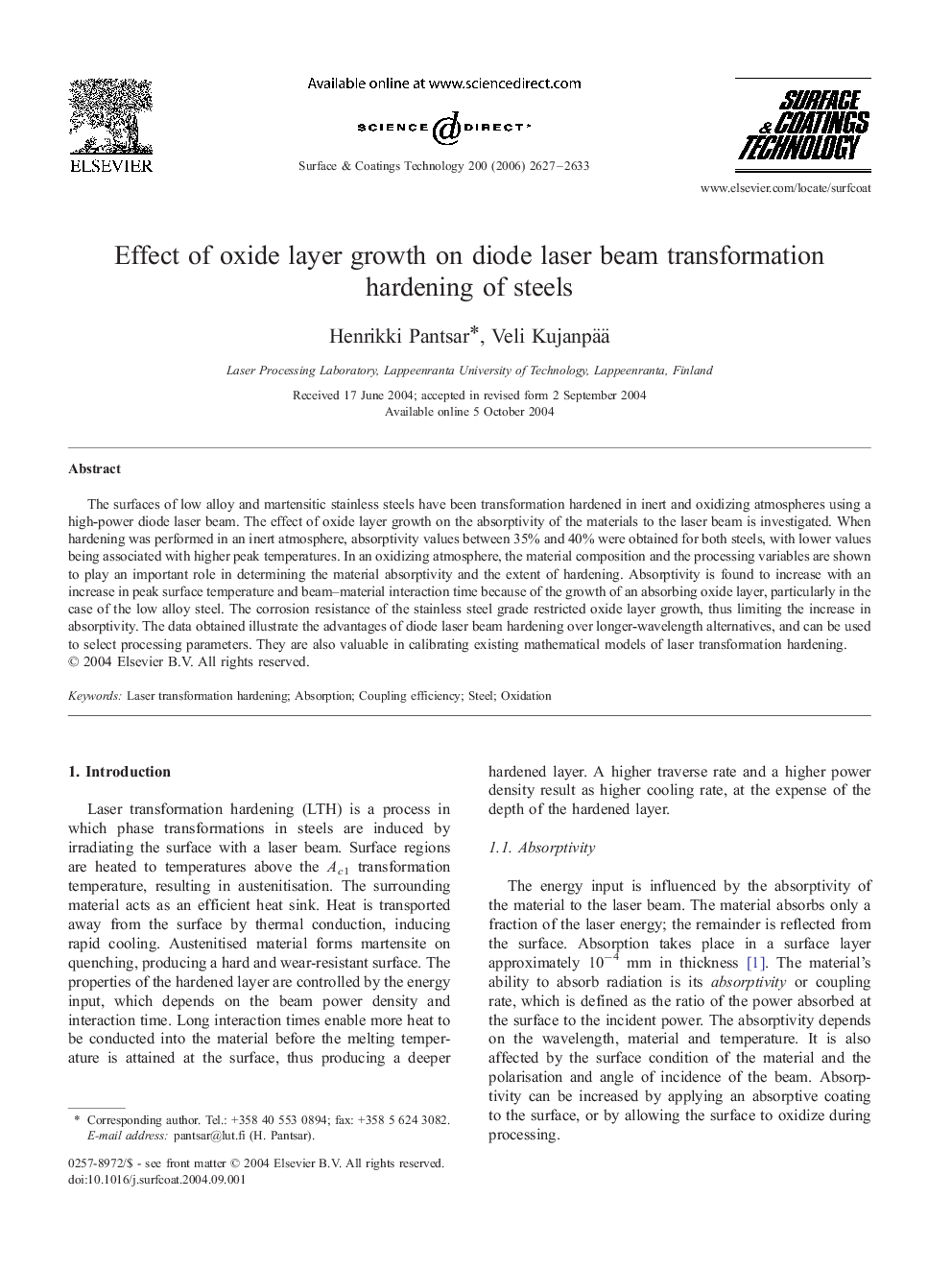| Article ID | Journal | Published Year | Pages | File Type |
|---|---|---|---|---|
| 1662852 | Surface and Coatings Technology | 2006 | 7 Pages |
The surfaces of low alloy and martensitic stainless steels have been transformation hardened in inert and oxidizing atmospheres using a high-power diode laser beam. The effect of oxide layer growth on the absorptivity of the materials to the laser beam is investigated. When hardening was performed in an inert atmosphere, absorptivity values between 35% and 40% were obtained for both steels, with lower values being associated with higher peak temperatures. In an oxidizing atmosphere, the material composition and the processing variables are shown to play an important role in determining the material absorptivity and the extent of hardening. Absorptivity is found to increase with an increase in peak surface temperature and beam–material interaction time because of the growth of an absorbing oxide layer, particularly in the case of the low alloy steel. The corrosion resistance of the stainless steel grade restricted oxide layer growth, thus limiting the increase in absorptivity. The data obtained illustrate the advantages of diode laser beam hardening over longer-wavelength alternatives, and can be used to select processing parameters. They are also valuable in calibrating existing mathematical models of laser transformation hardening.
